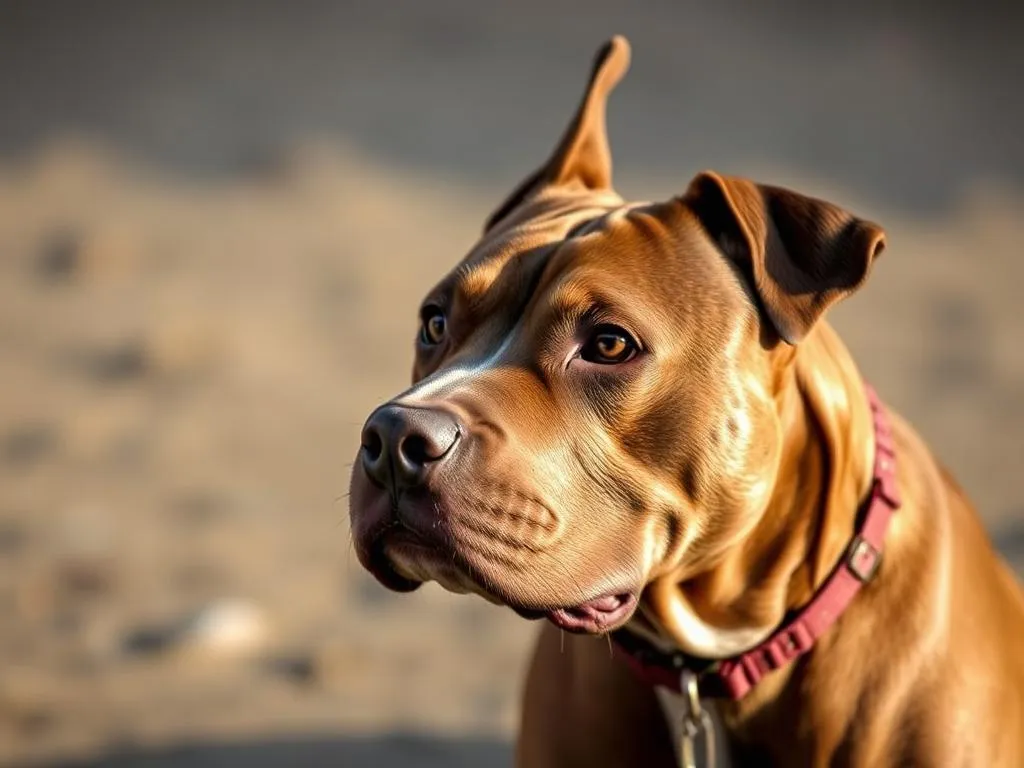
Introduction
The Pit Bull breed is known for its strength, loyalty, and affectionate nature. These dogs often hold a special place in the hearts of their owners due to their playful demeanor and protective instincts. However, the importance of training cannot be overstated when it comes to raising a well-behaved Pit Bull. Whether you are a new owner or have had experience with dogs before, understanding the nuances of this breed is essential for fostering a positive environment and ensuring good behavior.
This article serves as a comprehensive guide on how to raise a well-behaved Pit Bull. We will cover essential breed characteristics, the significance of early socialization, training principles, essential commands, socialization techniques, maintaining good behavior, and the role of health in behavior. Each of these aspects plays a crucial role in nurturing a well-adjusted Pit Bull.
Understanding the Pit Bull Breed
Breed Characteristics
The Pit Bull is a medium-sized breed with a muscular build. They typically weigh between 30 to 85 pounds, depending on the specific type of Pit Bull. Their coat is short, smooth, and can come in a variety of colors, including brindle, black, white, and fawn.
When it comes to temperament, Pit Bulls are often described as intelligent, eager to please, and highly social. They thrive on human interaction and have a strong desire to be part of a family. Unfortunately, there are many common misconceptions about Pit Bulls, often portraying them as aggressive and dangerous. In reality, a well-trained and socialized Pit Bull can be a loving companion.
The Importance of Early Socialization
Socialization is the process of exposing your dog to various environments, people, and other animals. For Pit Bulls, early socialization is critical. This exposure helps them develop confidence and adaptability, reducing the likelihood of fear-based aggression later in life.
The recommended age for socialization activities is between 3 to 14 weeks. During this period, puppies are particularly receptive to new experiences. Engaging in puppy classes, playdates, and visits to different locations can greatly benefit their social development.
Basic Training Principles
Positive Reinforcement
One of the most effective training methods for raising a well-behaved Pit Bull is positive reinforcement. This approach involves rewarding your dog for desirable behaviors, which encourages them to repeat those actions. Rewards can include treats, praise, or playtime.
For example, when your Pit Bull successfully sits on command, offering a small treat or enthusiastic praise reinforces that good behavior. The more positive experiences they associate with training, the more likely they are to behave well.
Consistency in Training
Consistency is key when it comes to training any dog, especially Pit Bulls. Establishing consistent commands and rules helps your dog understand what is expected of them. If family members use different words or commands for the same action, it can lead to confusion and frustration.
To maintain consistency, consider creating a training manual that outlines commands and rules for everyone in the household. This ensures that all family members are on the same page, which is vital for your dog’s understanding.
Setting Realistic Goals
Setting realistic training goals is essential for maintaining motivation and progress. Start with achievable short-term goals, such as teaching your Pit Bull to sit or stay. As they master these commands, you can gradually introduce more complex behaviors.
Long-term goals might include perfecting leash manners or teaching advanced tricks. Remember, patience is key. Each dog learns at their own pace, and celebrating small successes can foster a positive training environment.
Essential Commands for a Well-Behaved Pit Bull
Basic Commands
Teaching your Pit Bull basic commands is foundational for their training. Here are five essential commands to focus on:
- Sit: A fundamental command that establishes control.
- Stay: Helps your dog learn impulse control and patience.
- Come: An essential command for safety that ensures your dog returns to you.
- Down: A position that encourages calmness and relaxation.
- Leave it: Crucial for preventing your dog from picking up harmful or unwanted items.
Advanced Commands
Once your Pit Bull has mastered the basics, you can move on to more advanced commands:
- Heel: Teaches your dog to walk beside you on a loose leash.
- Place: Designates a specific area for your dog to settle down.
- Roll over: A fun trick that showcases your dog’s skills.
- Speak/Quiet: Teaches your dog to bark on command and to stop barking when asked.
Training Tips for Commands
When teaching commands, it is essential to use clear, consistent language and gestures. Here’s a step-by-step guide for teaching the sit command:
- Get your dog’s attention: Hold a treat close to their nose.
- Raise the treat: Move your hand up, causing their head to tilt back and their bottom to lower.
- Say “sit”: As their rear hits the ground, immediately praise and give them the treat.
- Repeat: Practice several times, gradually phasing out the treat.
Common mistakes include using the command before the dog understands it or not rewarding them immediately. If your dog struggles, break the command down into smaller steps and be patient.
Socialization and Interaction
Meeting New People and Dogs
Introducing your Pit Bull to new people and dogs is a critical part of their socialization. It’s important to approach these introductions gradually. Start with calm environments and positive experiences to reduce anxiety.
When meeting new people, allow your Pit Bull to approach at their own pace. Encourage gentle interactions, and use treats to create positive associations. For meeting other dogs, ensure both dogs are on leashes and in a neutral environment. Monitor their body language, and if either dog shows signs of stress, take a step back.
Exposure to Different Environments
Exposing your Pit Bull to various environments helps them become well-rounded. Take them to parks, cafes, or busy streets where they can experience different sights, sounds, and smells.
Activities like car rides or attending dog-friendly events can also stimulate their senses and enhance their confidence. Ensure that each experience is positive to build their comfort level in new settings.
Managing Aggressive Behavior
While raising a well-behaved Pit Bull, it’s essential to recognize signs of aggression. Common indicators include growling, snapping, and excessive barking. If you notice these behaviors, it’s crucial to address them immediately.
Techniques for redirecting aggressive behavior include:
- Distraction: Use treats or toys to divert their attention.
- Training: Reinforce positive behaviors and commands.
- Controlled exposure: Gradually introduce them to triggers in a controlled manner.
If aggressive behavior persists, consider seeking professional help from a trainer or behaviorist.
Maintaining Good Behavior
Establishing a Routine
Establishing a routine is vital for your Pit Bull’s well-being. A consistent schedule for feeding, walking, and playtime helps them feel secure and reduces anxiety. Dogs thrive on predictability, which contributes to their overall behavior.
Try to stick to regular feeding times, exercise schedules, and training sessions to create a sense of stability in their lives.
Mental and Physical Stimulation
Providing mental and physical stimulation is crucial for a well-behaved Pit Bull. Boredom can lead to destructive behaviors. Engage your dog with:
- Puzzle toys: These challenge their minds and keep them occupied.
- Training games: Reinforcing commands through fun activities can enhance learning.
- Regular exercise: Daily walks, runs, and play sessions are essential for their physical health.
Dealing with Behavioral Issues
Common behavioral problems in Pit Bulls include chewing, barking, and jumping. Addressing these issues promptly is vital for a harmonious household.
For example, if your Pit Bull is chewing furniture, redirect them to an appropriate chew toy and reinforce that behavior with praise. For excessive barking, identify the cause and work on desensitizing them to the trigger.
If behavioral issues persist despite your efforts, consider consulting a professional trainer or behaviorist for specialized guidance.
The Role of Health in Behavior
Regular Veterinary Checkups
Regular veterinary checkups are essential for maintaining your Pit Bull’s health. Health issues can significantly affect behavior, so keeping up with routine exams ensures that your dog is in good health.
Be aware of common health issues in Pit Bulls, such as hip dysplasia or allergies, which can lead to discomfort and behavioral changes. Early detection and treatment can improve their quality of life and behavior.
Nutrition and Diet
A balanced diet plays a crucial role in your Pit Bull’s behavior and overall well-being. Ensure that you provide high-quality dog food that meets their nutritional needs.
Consult with your veterinarian to determine the best diet for your Pit Bull, taking into account their age, weight, and activity level. A well-nourished dog is more likely to exhibit stable behavior and energy levels.
Conclusion
Raising a well-behaved Pit Bull is a rewarding journey that requires dedication and understanding. By focusing on breed characteristics, early socialization, effective training principles, essential commands, and maintaining good behavior, you can foster a loving and well-adjusted companion.
Remember that training is an ongoing process, and every dog is unique. Patience, consistency, and a positive attitude will go a long way in your efforts. Embrace the journey, and enjoy the bond you create with your Pit Bull as they grow into a well-behaved and cherished member of your family.




